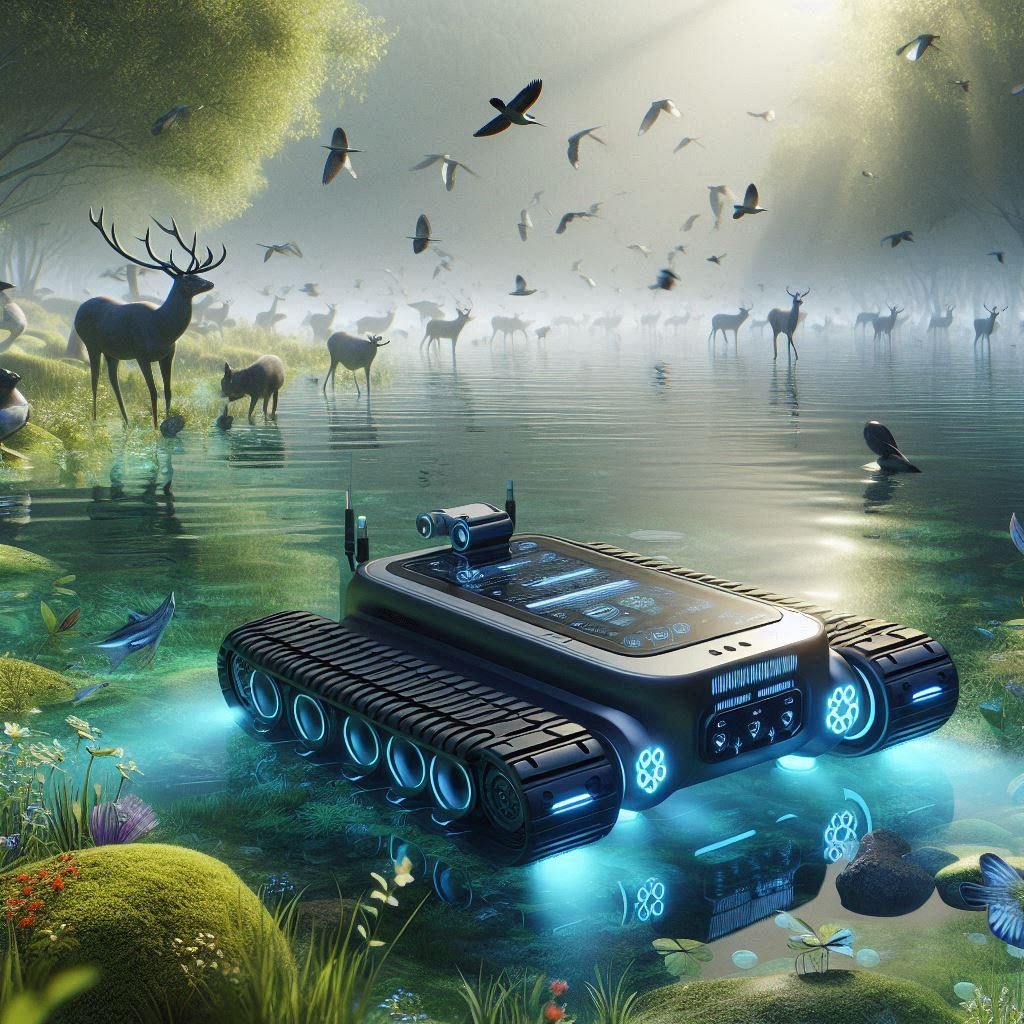Biodiversity, the dazzling variety of life on Earth, is under threat. Climate change, deforestation, pollution, and urbanization are driving species to extinction at an alarming rate. According to the Intergovernmental Science-Policy Platform on Biodiversity and Ecosystem Services (IPBES), approximately one million animal and plant species are now threatened with extinction, many within decades. To mitigate this loss, accurate and continuous monitoring of biodiversity is critical. But traditional methods are often labor-intensive, time-consuming, and limited in scale.
Enter autonomous systems—robotics, drones, and AI-powered sensors that can observe ecosystems non-invasively and in real-time. These innovations offer unprecedented potential to transform how scientists monitor, understand, and conserve biodiversity.
The Need for Better Biodiversity Monitoring

Conventional biodiversity monitoring relies heavily on manual observations, camera traps, and satellite imaging. While effective to a degree, these methods are limited by human labor, geographic coverage, and resolution constraints. Moreover, data collection is often inconsistent and lacks temporal granularity.
Challenges with Traditional Monitoring:
- High operational costs
- Limited coverage in remote or harsh environments
- Gaps in real-time data collection
- Delays in data analysis and interpretation
To overcome these barriers, scientists and technologists are increasingly turning to autonomous systems.
What Are Autonomous Monitoring Systems?
Autonomous systems refer to self-operating machines that can function independently or with minimal human intervention. In biodiversity monitoring, these systems may include:
- Aerial drones equipped with cameras and sensors
- Underwater vehicles for marine life observation
- Ground-based robots with multi-modal sensors
- AI algorithms for pattern recognition and anomaly detection
These technologies work together to collect and analyze vast amounts of data across various ecosystems, from rainforests to coral reefs.
Technologies Powering Autonomous Monitoring
- Remote Sensing Drones Equipped with high-resolution multispectral and thermal cameras, drones can fly over large areas, capturing detailed images of flora and fauna. Some drones are programmed with AI algorithms to identify species, track movements, and detect changes in vegetation.
- Underwater Gliders and Drones Autonomous Underwater Vehicles (AUVs) and Remotely Operated Vehicles (ROVs) are transforming marine biodiversity studies. These machines can collect water samples, detect ocean acidity, and track fish migrations.
- Acoustic Sensors Bioacoustics monitoring uses audio recordings to identify species by their sounds. This method is particularly useful for birds, bats, and marine mammals. Autonomous recording units (ARUs) placed in the field can operate for months, continuously gathering data.
- Camera Traps with AI Modern camera traps integrated with AI can instantly identify species, count individuals, and transmit real-time data to researchers. This reduces the time spent sifting through thousands of images.
- Environmental DNA (eDNA) Robots Some autonomous platforms can collect water or soil samples to extract DNA left behind by organisms. This method allows scientists to detect the presence of elusive or rare species.
- Satellite-Based Monitoring with AI Satellites equipped with AI algorithms can detect deforestation, wildfires, and shifts in vegetation patterns. By integrating satellite data with ground-based autonomous systems, researchers gain a holistic view of ecosystem health.
Case Studies: Autonomous Systems in Action
1. Rainforest Conservation in the Amazon
Drones and solar-powered sensor stations are being used to monitor illegal logging in real-time. These autonomous systems send alerts to authorities when they detect unusual noise patterns or canopy changes.
2. Coral Reef Monitoring in the Great Barrier Reef
Underwater robots equipped with cameras and chemical sensors are mapping the reef, identifying bleaching events, and analyzing water quality. AI models help predict areas at risk, allowing for targeted interventions.
3. Arctic Wildlife Tracking
In the Arctic, where conditions are extreme and access is limited, autonomous aerial drones track caribou migrations and polar bear movements. These insights are crucial for adapting conservation strategies in response to climate change.
4. Smart Forests in Europe
The “Internet of Trees” project in Germany uses a network of sensors and autonomous drones to monitor tree health, detect pests, and assess biodiversity in real-time.
Advantages of Autonomous Biodiversity Monitoring
- Continuous Surveillance: Machines can operate 24/7, capturing data across time scales that humans cannot.
- Non-Invasive Methods: Many systems are designed to minimize disturbance to wildlife.
- Scalability: Systems can be deployed over large areas and scaled up as needed.
- Data Integration: Real-time data can be automatically analyzed and visualized, enabling quicker decision-making.
- Cost Efficiency: Though initial setup may be expensive, operational costs are significantly reduced over time.
Limitations and Ethical Considerations
Despite the promise, autonomous monitoring systems are not without challenges:
- Data Overload: Massive amounts of data require advanced storage and analytics systems.
- Battery Life and Maintenance: Field equipment needs periodic maintenance and may fail in harsh conditions.
- Algorithm Bias: AI models must be trained on diverse datasets to avoid skewed interpretations.
- Privacy and Surveillance: Continuous monitoring can raise ethical issues, especially in populated areas.
The Role of Citizen Science and Collaboration
Autonomous systems do not replace human observation but rather complement it. Collaborative projects involving local communities and citizen scientists can enhance data quality and ensure ethical deployment.
Initiatives like Earthwatch and iNaturalist leverage both autonomous systems and public participation, creating a hybrid model of biodiversity monitoring.
The Future of Autonomous Ecosystem Monitoring
The integration of 5G, edge computing, and Internet of Things (IoT) with autonomous systems promises a future where:
- Ecosystem threats are identified and addressed in real time.
- Cross-border conservation efforts become more coordinated.
- Predictive models guide proactive biodiversity management.
As AI continues to evolve, we may see autonomous systems that not only monitor but also intervene—removing invasive species, planting native flora, or deploying chemical treatments against disease outbreaks.
Conclusion: Machines for a More Natural World
Autonomous systems are redefining how we monitor and protect biodiversity. By overcoming the limitations of traditional methods, these technologies allow for more accurate, scalable, and ethical environmental stewardship. As we face the twin crises of climate change and species loss, investing in smart, autonomous biodiversity monitoring is not just a technological choice—it’s a moral imperative.
With careful implementation, interdisciplinary collaboration, and ongoing innovation, autonomous systems can help secure a future where nature and technology work hand in hand to preserve the planet’s most precious resource: life itself.









+ There are no comments
Add yours